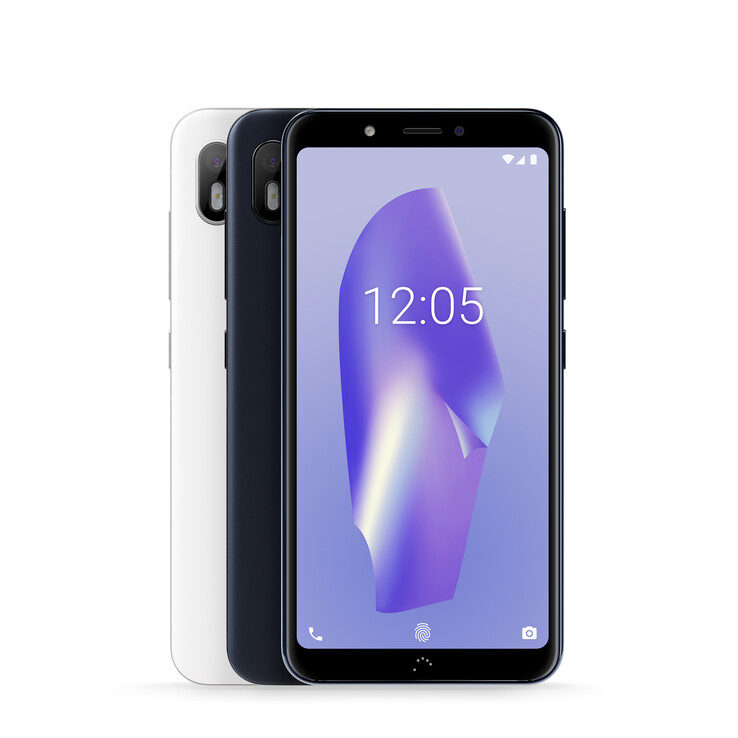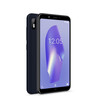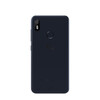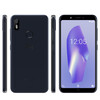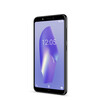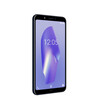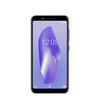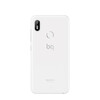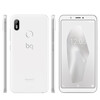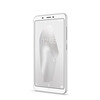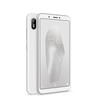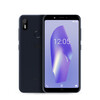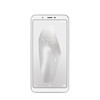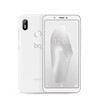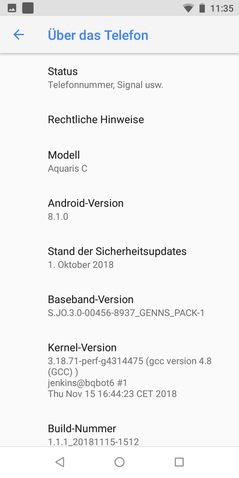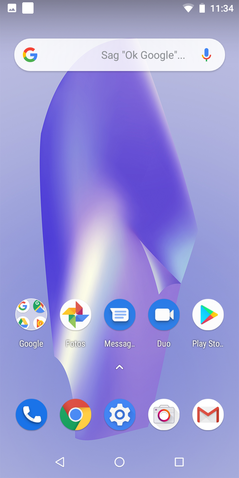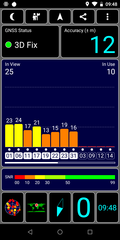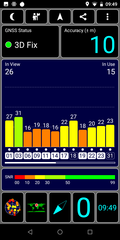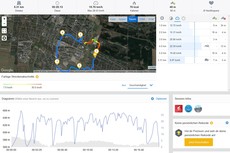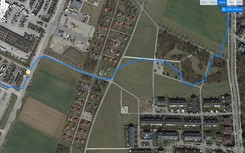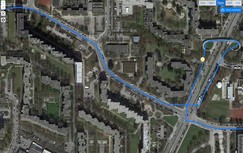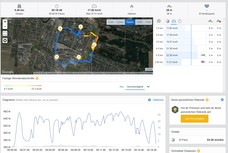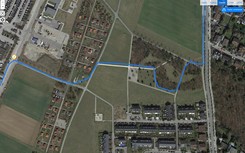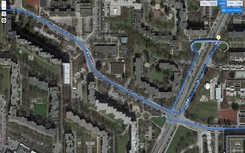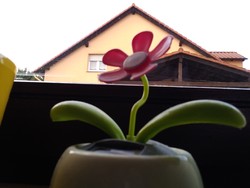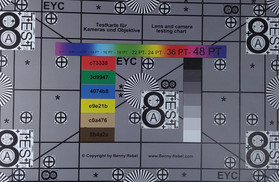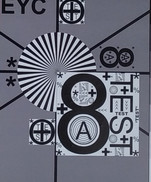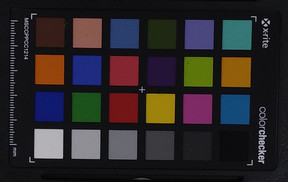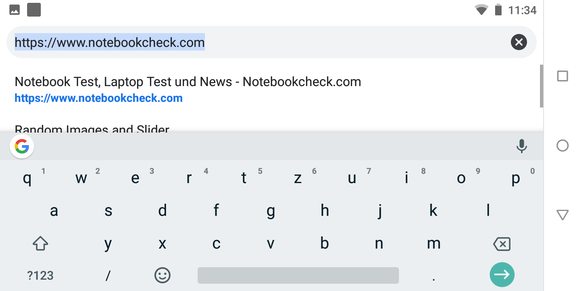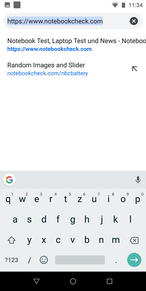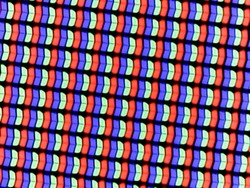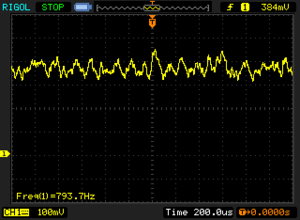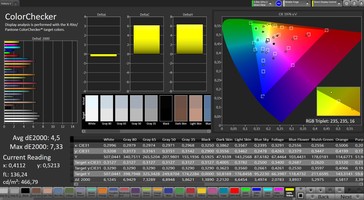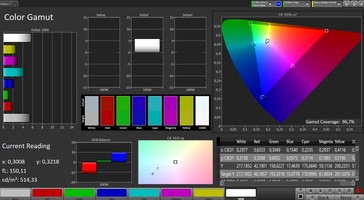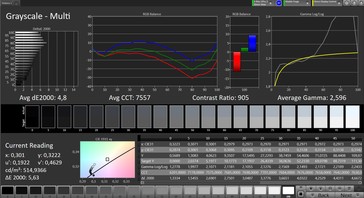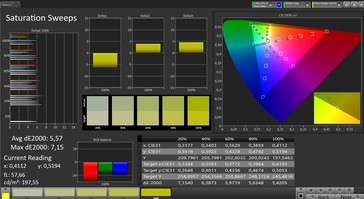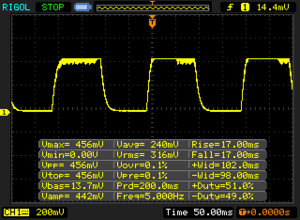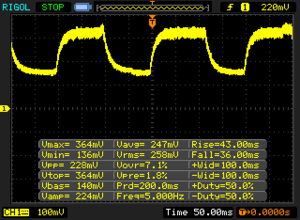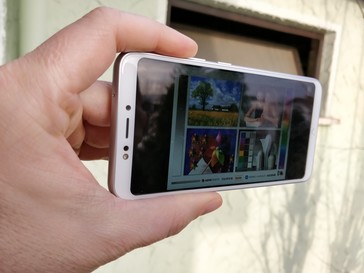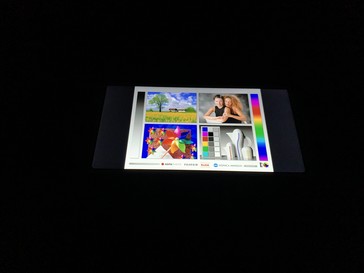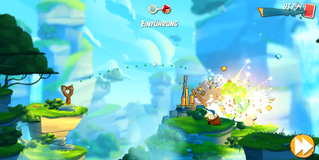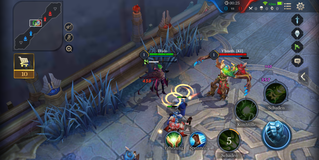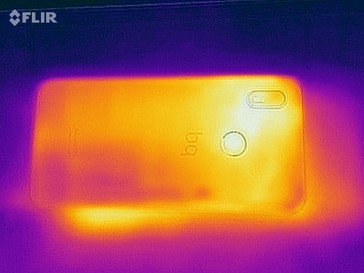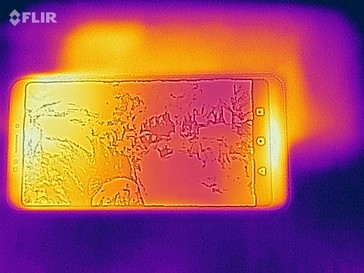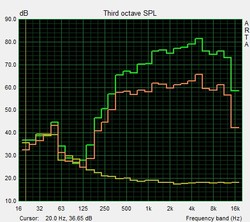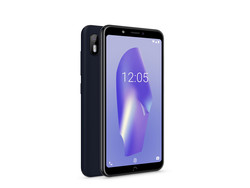BQ Aquaris C Smartphone Review
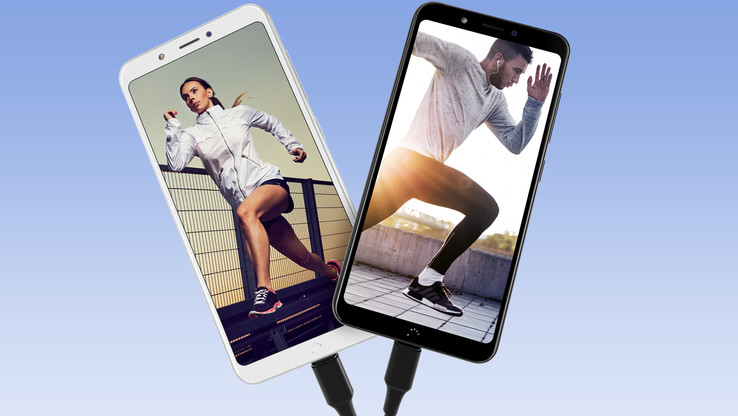
The Spanish smartphone maker BQ has made its name with solid, low-priced devices. Many of its devices stand out not only in terms of design, but also in terms of hardware that you get for the price. The Aquaris C, another low-priced smartphone from BQ, is no exception. It would appear as though BQ’s engineers thought something like this while designing the Aquaris C: “How many features can we cram while keeping the price as reasonable as possible?”. The answer: They put a USB Type-C port, NFC, 5 GHz Wi-Fi and Quick Charge 3.0 into the smartphone. All of the above are just technical terms to the uninitiated, but they come in really handy during day-to-day use.
We also examine how well the BQ Aquaris C does against other similarly priced smartphones. Competing devices include: The Nokia 5.1, the Gigaset GS100, the Honor 7S and the Xiaomi Redmi 6.
Case - Rigid, but not spectacular
When it comes to the case, the BQ Aquaris C shows some restraint: Muted colors such as black and white, a matte somewhat shiny back and unobtrusive chrome accents around the fingerprint sensor. Thanks to its outward look, the BQ Aquaris C will not stand out in the crowd, which can be of advantage in certain situations. The smartphone looks like an actual worry stone due to its rounded edges.
The bezels around the screen are really noticeable on all sides, especially so if you choose the white variant. Applying pressure to either the front or the back does nothing, and the smartphone does not bend at all. However, we heard slight creaking noises during our bend test. The weight is quite average.
Connectivity - Only what is useful
At the time of our review, the smartphone sells for about 100 Euros ($113) on the Internet. However, the MSRP is 70 Euros ($79) higher. For this price, you will get 2 GB of RAM and 16 GB of internal storage. It is not a lot, but it is typical for a device with such a price tag.
The smartphone can use two SIM cards at the same time. Alternatively, you can use one SIM card and one microSD card. The microSD card can actually be formatted as internal storage. However, apps cannot be stored or installed on the SD card.
Two unusual features in this price range are NFC for short-distance communication and a USB Type-C port. The Type-C port actually supports USB OTG. That being said, it only operates at USB 2.0 speeds.
Software - Android 9 will come to the BQ C
The smartphone comes with stock Android 8.1. The security patches were last updated in October 2018. The manufacturer promises that the smartphone will be updated to Android 9.
There is not a lot of preinstalled software, which is a good thing, because the Aquaris C does not come with a lot of storage space. You can buy additional storage through BQ On, if you feel like you need it.
Communication and GPS - Aquaris C with Wireless-AC
5 GHz Wi-Fi and support for Wireless-AC are not a given in the price range of the Aquaris C. In fact, this is rather rare. It is not surprising then, that the Aquaris C takes first place in our Wi-Fi benchmarks. Of course, it cannot touch high-end devices, but it is on the same level as many mid-range smartphones.
In terms of 4G, BQ goes for the bare minimum: Our European version supports only LTE bands that are frequently used in Central Europe, so if you travel to another continent or go to an exotic country, the BQ smartphone will not be able to operate in local 4G networks. Having said that, the reception in the German D2 network is quite good, we get three bars as the minimum even inside the buildings.
| Networking | |
| iperf3 transmit AX12 | |
| BQ Aquaris C | |
| Nokia 5.1 | |
| Gigaset GS100 | |
| Honor 7S | |
| Xiaomi Redmi 6 | |
| iperf3 receive AX12 | |
| Average of class Smartphone (last 2 years) | |
| BQ Aquaris C | |
| Nokia 5.1 | |
| Gigaset GS100 | |
| Xiaomi Redmi 6 | |
| Honor 7S | |
When it comes to geolocation, the Aquaris C exhibits a margin of error of 10 meters (~33 ft) indoors. Things do not get any better outdoors.
In order to determine how accurate our review device is when it comes to geolocation, we take it with us on a bike ride. During this ride, we are also accompanied by the professional navigator Garmin Edge 520. All in all, the low-priced smartphone does not do too poorly. Of course, it cuts some corners here and there, but overall it has no trouble mapping the route that the user takes. In fact, the Aquaris C did quite well in the bridge-crossing section where many other smartphones struggle. Those who do not need a very accurate GPS navigator and just need a device that will take them from place A to place B will not be disappointed with the BQ smartphone.
Telephony and Call Quality - Tinny ear-speaker
The Aquaris C comes with the standard Android phone app, which is very simple and therefore easy to use. According to the manufacturer, the smartphone supports VoLTE, as long as it is enabled by the network operator.
The ear-speaker can get very loud. However, the sound becomes distorted and noisy at high volume. The microphone also fails to reproduce our voice very clearly. The smartphone sounds quite good in speaker mode though. Our voice is reproduced faithfully and there is no noise to speak of. All in all, the call quality is quite good, considering the price.
Cameras - Good enough during daylight
The Aquaris C has a 5 MP camera on the front, which is usual for a smartphone with such a price tag. The dynamic range is mediocre, but the sharpness is passable and the color reproduction is okay as well.
The 13 MP rear camera is also not uncommon in smartphones in this price range: Only the Xiaomi Redmi 6 features a dual-camera setup, here the second lens serves as a depth sensor to create the Bokeh effect in portrait mode. The BQ Aquaris C cannot do that. What it can do, though, is take nicely-detailed, color-accurate pictures. There is some black crush in the dark areas of the image and the smartphone is not fit for night photography: The images look noisy and blurry.
The main camera can record 1080p video at 30 FPS. The sharpness and the color reproduction are okay, and the sensor reacts quickly and smoothly to changes in lighting.
In our lab, we photograph our test chart and the ColorChecker color chart with the main camera. This test shows that the images taken with the rear camera are quite dim. However, they are still very well-detailed.
Accessories and Warranty - BQ smartphone with a standard warranty
The BQ Aquaris C comes with a 24-month warranty. Please see our Guarantees, Return policies and Warranties article for country-specific information. The box contains a charger, a USB cable and a SIM card removal tool. You can also buy a case specifically designed for the Aquaris C from BQ’s online store.
Input Devices and Handling - Precise controls
The touchscreen puts up some resistance. Other than that, it works pretty well, even at the edges and in the corners. The software keys at the bottom of the screen are used to navigate through the menus. The power button and the volume rocker can be found on the right side of the device. They respond to inputs accurately, but with a slight delay.
The fingerprint sensor on the back also responds to inputs accurately, but again with a slight delay.
Display - BQ Aquaris C with a bright screen
Our review device comes with a very bright IPS display. It has an average brightness of 608 cd/m², which is much higher than what other competing devices offer. The brightness distribution of 91% is also very good.
In terms of resolution, the Nokia 5.1 takes the lead with its Full HD display. All other devices, including the Aquaris C, have a resolution of 1440x720. Due to the 2:1 aspect ratio, 16:9 content is marred by black sidebars on either side of the screen in landscape mode.
| |||||||||||||||||||||||||
Brightness Distribution: 91 %
Center on Battery: 623 cd/m²
Contrast: 1021:1 (Black: 0.61 cd/m²)
ΔE Color 4.5 | 0.5-29.43 Ø5
ΔE Greyscale 4.8 | 0.57-98 Ø5.3
96.7% sRGB (Calman 2D)
Gamma: 2.596
| BQ Aquaris C IPS, 1440x720, 5.45 | Nokia 5.1 IPS, 2160x1080, 5.50 | Gigaset GS100 IPS, 1440x720, 5.50 | Honor 7S IPS, 1440x720, 5.45 | Xiaomi Redmi 6 IPS, 1440x720, 5.45 | |
|---|---|---|---|---|---|
| Screen | 24% | -38% | -2% | -12% | |
| Brightness middle | 623 | 447 -28% | 442 -29% | 422 -32% | 373 -40% |
| Brightness | 608 | 451 -26% | 446 -27% | 417 -31% | 361 -41% |
| Brightness Distribution | 91 | 88 -3% | 86 -5% | 96 5% | 94 3% |
| Black Level * | 0.61 | 0.16 74% | 0.35 43% | 0.58 5% | 0.53 13% |
| Contrast | 1021 | 2794 174% | 1263 24% | 728 -29% | 704 -31% |
| Colorchecker dE 2000 * | 4.5 | 4.5 -0% | 8.03 -78% | 3.29 27% | 4.22 6% |
| Colorchecker dE 2000 max. * | 7.33 | 7.9 -8% | 15.81 -116% | 6.91 6% | 10.14 -38% |
| Greyscale dE 2000 * | 4.8 | 4.5 6% | 10.4 -117% | 3.1 35% | 3.3 31% |
| Gamma | 2.596 85% | 2.31 95% | 2.02 109% | 2.219 99% | 2.321 95% |
| CCT | 7557 86% | 7517 86% | 10070 65% | 6873 95% | 6862 95% |
* ... smaller is better
Screen Flickering / PWM (Pulse-Width Modulation)
| Screen flickering / PWM detected | 794 Hz | ≤ 15 % brightness setting | |
The display backlight flickers at 794 Hz (worst case, e.g., utilizing PWM) Flickering detected at a brightness setting of 15 % and below. There should be no flickering or PWM above this brightness setting. The frequency of 794 Hz is quite high, so most users sensitive to PWM should not notice any flickering. In comparison: 53 % of all tested devices do not use PWM to dim the display. If PWM was detected, an average of 17900 (minimum: 5 - maximum: 3846000) Hz was measured. | |||
The screen has a mediocre black value of 0.61 cd/m², hence the mediocre contrast ratio of 1021:1. The colors are also not as vivid as we would have liked them to be. PWM crops up when the brightness is set to a low level. However, it has a very high frequency, which means that even susceptible individuals should not experience any problems because of it.
We use a spectrophotometer running SpectraCal's CalMAN software to examine color accuracy more closely. Here, we observed significant color deviations from the sRGB color space. Moreover, the screen suffers from a visible bluish cast.
Display Response Times
| ↔ Response Time Black to White | ||
|---|---|---|
| 34 ms ... rise ↗ and fall ↘ combined | ↗ 17 ms rise | |
| ↘ 17 ms fall | ||
| The screen shows slow response rates in our tests and will be unsatisfactory for gamers. In comparison, all tested devices range from 0.1 (minimum) to 240 (maximum) ms. » 89 % of all devices are better. This means that the measured response time is worse than the average of all tested devices (21.5 ms). | ||
| ↔ Response Time 50% Grey to 80% Grey | ||
| 79 ms ... rise ↗ and fall ↘ combined | ↗ 43 ms rise | |
| ↘ 36 ms fall | ||
| The screen shows slow response rates in our tests and will be unsatisfactory for gamers. In comparison, all tested devices range from 0.2 (minimum) to 636 (maximum) ms. » 99 % of all devices are better. This means that the measured response time is worse than the average of all tested devices (33.7 ms). | ||
Performance - Old SoC, but good performance
Three years in the smartphone market may feel like an eternity, but that is how long the Snapdragon 425 has been on the market. It is the SoC that the Aquaris C features. Nevertheless, the Snapdragon 425 still offers a lot of performance for a smartphone in this price range. The Aquaris C cannot keep up with the Redmi 6 or the Nokia 5.1, but it still takes a spot in the middle of our comparison chart. In practice, users can navigate through the menus quite smoothly.
The graphics unit also takes a spot in the middle of our comparison chart. The Adreno 308 can run some modern titles. However, it does not support many current APIs, which is why it cannot run all of the modern games.
| GFXBench 3.0 | |
| on screen Manhattan Onscreen OGL (sort by value) | |
| BQ Aquaris C | |
| Nokia 5.1 | |
| Gigaset GS100 | |
| Honor 7S | |
| Xiaomi Redmi 6 | |
| Average Qualcomm Snapdragon 425 (MSM8917) (3.7 - 11, n=18) | |
| Average of class Smartphone (6.8 - 165, n=185, last 2 years) | |
| 1920x1080 1080p Manhattan Offscreen (sort by value) | |
| BQ Aquaris C | |
| Nokia 5.1 | |
| Honor 7S | |
| Xiaomi Redmi 6 | |
| Average Qualcomm Snapdragon 425 (MSM8917) (1.3 - 3, n=17) | |
| Average of class Smartphone (9.2 - 363, n=185, last 2 years) | |
| AnTuTu v7 - Total Score (sort by value) | |
| BQ Aquaris C | |
| Honor 7S | |
| Xiaomi Redmi 6 | |
| Average Qualcomm Snapdragon 425 (MSM8917) (32557 - 46710, n=10) | |
| AnTuTu v6 - Total Score (sort by value) | |
| BQ Aquaris C | |
| Nokia 5.1 | |
| Gigaset GS100 | |
| Xiaomi Redmi 6 | |
| Average Qualcomm Snapdragon 425 (MSM8917) (29054 - 39106, n=17) | |
In this price range, the smartphone offers average performance when it comes to browsing the web.
| JetStream 1.1 - Total Score | |
| Average of class Smartphone (last 2 years) | |
| Xiaomi Redmi 6 (Chrome 70) | |
| Nokia 5.1 (Chrome 70) | |
| BQ Aquaris C (Chrome 70) | |
| Honor 7S (Chrome 67) | |
| Average Qualcomm Snapdragon 425 (MSM8917) (15.5 - 18.7, n=16) | |
| Gigaset GS100 (Chrome 68) | |
| Octane V2 - Total Score | |
| Average of class Smartphone (4633 - 89112, n=212, last 2 years) | |
| Xiaomi Redmi 6 (Chrome 70) | |
| Nokia 5.1 (Chrome 70) | |
| BQ Aquaris C (Chrome 70) | |
| Honor 7S (Chrome 67) | |
| Average Qualcomm Snapdragon 425 (MSM8917) (2411 - 3374, n=17) | |
| Gigaset GS100 (Chrome 68) | |
| Mozilla Kraken 1.1 - Total | |
| Honor 7S (Chrome 67) | |
| Gigaset GS100 (Chrome 68) | |
| BQ Aquaris C (Chrome 70) | |
| Average Qualcomm Snapdragon 425 (MSM8917) (10742 - 16192, n=17) | |
| Nokia 5.1 (Chrome 70) | |
| Xiaomi Redmi 6 (Chrome 70) | |
| Average of class Smartphone (388 - 9999, n=173, last 2 years) | |
* ... smaller is better
The internal storage is relatively fast. The SD card reader also offers good transfer rates. The loading times are acceptable, but longer than on devices with faster storage.
| BQ Aquaris C | Nokia 5.1 | Gigaset GS100 | Honor 7S | Xiaomi Redmi 6 | Average 16 GB eMMC Flash | Average of class Smartphone | |
|---|---|---|---|---|---|---|---|
| AndroBench 3-5 | -17% | -34% | 12% | 79% | -29% | 1493% | |
| Sequential Read 256KB | 275.9 | 264.5 -4% | 97.2 -65% | 237.6 -14% | 287 4% | 164.5 ? -40% | 1502 ? 444% |
| Sequential Write 256KB | 45.7 | 25.96 -43% | 24 -47% | 67.1 47% | 118.4 159% | 43 ? -6% | 1111 ? 2331% |
| Random Read 4KB | 39.1 | 44.24 13% | 17.6 -55% | 39.69 2% | 52.5 34% | 21.7 ? -45% | 247 ? 532% |
| Random Write 4KB | 9.8 | 4.93 -50% | 6.2 -37% | 13.24 35% | 36.3 270% | 8.08 ? -18% | 271 ? 2665% |
| Sequential Read 256KB SDCard | 83 ? | 72.6 ? -13% | 79.5 ? -4% | 80.1 ? -3% | 82.9 ? 0% | 59.1 ? -29% | |
| Sequential Write 256KB SDCard | 59.2 ? | 55.5 ? -6% | 61 ? 3% | 61.9 ? 5% | 64.4 ? 9% | 39.8 ? -33% |
Games - Not compatible with the latest titles
We benchmark a few games on the Aquaris C to examine whether or not it is fit for gaming. Simple titles such as "Angry Birds 2" run smoothly and without any problems. The loading times in such games are also quite good. In demanding titles such as "Arena of Valor", there were a few stutters in the game menu and then the game crashed during our benchmark. Other than that, the game runs smoothly, but only on low settings.
The touchscreen and the motion sensor work well even in fast-paced titles such as "Temple Run 2". Because the graphics unit does not support the latest APIs, certain games are missing from the Google Play Store, but these titles are not playable on the Aquaris C anyway. The demanding portions of gaming benchmarks cannot be selected as well.
Emissions - The BQ smartphone does not get hot
Temperature
The BQ Aquaris C does not get hot. Under load, the temperatures peak at 35.2 °C (~95.36 °F). The case never gets really warm. When idle, the smartphone does not get warm at all.
(+) The maximum temperature on the upper side is 33.5 °C / 92 F, compared to the average of 35 °C / 95 F, ranging from 21.9 to 56 °C for the class Smartphone.
(+) The bottom heats up to a maximum of 35.2 °C / 95 F, compared to the average of 33.8 °C / 93 F
(+) In idle usage, the average temperature for the upper side is 27.8 °C / 82 F, compared to the device average of 32.7 °C / 91 F.
Speakers
The small mono-speaker on the bottom of the smartphone gets really loud: It can fill a quiet mid-size room with sound. The smartphone produces a rather high-pitched sound that can get uncomfortable, especially in the highs. There is no distortion at high volume and the speaker does not sound warm. All in all, the Aquaris C offers an average sound quality, which is not unusual for a device in this price range.
You can connect external speakers or headphones via either the 3.5-mm audio jack or Bluetooth. You can get a much better listening experience this way.
BQ Aquaris C audio analysis
(+) | speakers can play relatively loud (88.5 dB)
Bass 100 - 315 Hz
(-) | nearly no bass - on average 81% lower than median
(+) | bass is linear (0% delta to prev. frequency)
Mids 400 - 2000 Hz
(-) | nearly no mids - on average 81% lower than median
(+) | mids are linear (0% delta to prev. frequency)
Highs 2 - 16 kHz
(-) | nearly no highs - on average 81% lower than median
(+) | highs are linear (0% delta to prev. frequency)
Overall 100 - 16.000 Hz
(-) | overall sound is not linear (115.6% difference to median)
Compared to same class
» 85% of all tested devices in this class were better, 5% similar, 10% worse
» The best had a delta of 12%, average was 38%, worst was 134%
Compared to all devices tested
» 95% of all tested devices were better, 1% similar, 3% worse
» The best had a delta of 4%, average was 25%, worst was 134%
Nokia 5.1 audio analysis
(+) | speakers can play relatively loud (84.8 dB)
Bass 100 - 315 Hz
(-) | nearly no bass - on average 39.1% lower than median
(±) | linearity of bass is average (8.9% delta to prev. frequency)
Mids 400 - 2000 Hz
(±) | reduced mids - on average 6.1% lower than median
(±) | linearity of mids is average (7.1% delta to prev. frequency)
Highs 2 - 16 kHz
(+) | balanced highs - only 4.9% away from median
(+) | highs are linear (5% delta to prev. frequency)
Overall 100 - 16.000 Hz
(±) | linearity of overall sound is average (26.9% difference to median)
Compared to same class
» 64% of all tested devices in this class were better, 6% similar, 30% worse
» The best had a delta of 12%, average was 38%, worst was 134%
Compared to all devices tested
» 79% of all tested devices were better, 4% similar, 16% worse
» The best had a delta of 4%, average was 25%, worst was 134%
Battery Life - The Aquaris C lasts for a long time
Energy Management
Our review device draws very little power. In our comparison chart, it is only beaten by the Xiaomi Redmi 6. Regardless of the load, the energy consumption of the BQ Aquaris C always remains within reasonable bounds.
| Off / Standby | |
| Idle | |
| Load |
|
| BQ Aquaris C 3000 mAh | Nokia 5.1 2970 mAh | Gigaset GS100 3000 mAh | Honor 7S 3020 mAh | Xiaomi Redmi 6 3000 mAh | Average Qualcomm Snapdragon 425 (MSM8917) | Average of class Smartphone | |
|---|---|---|---|---|---|---|---|
| Power Consumption | -26% | -24% | -82% | 21% | -17% | -13% | |
| Idle Minimum * | 0.7 | 1.38 -97% | 1.3 -86% | 2.5 -257% | 0.6 14% | 1.113 ? -59% | 0.897 ? -28% |
| Idle Average * | 1.9 | 2.14 -13% | 2.1 -11% | 3 -58% | 1.3 32% | 2.19 ? -15% | 1.452 ? 24% |
| Idle Maximum * | 2.5 | 2.2 12% | 2.9 -16% | 3.8 -52% | 2.1 16% | 2.55 ? -2% | 1.629 ? 35% |
| Load Average * | 4.1 | 4.21 -3% | 4.4 -7% | 5.4 -32% | 3 27% | 4.32 ? -5% | 5.55 ? -35% |
| Load Maximum * | 5.2 | 6.81 -31% | 5.3 -2% | 5.7 -10% | 4.4 15% | 5.5 ? -6% | 8.31 ? -60% |
* ... smaller is better
Battery Life
The BQ Aquaris C lasts nine hours and forty three minutes in our Wi-Fi test. Nevertheless, it still takes a spot in the middle of our comparison chart, mostly because the Honor 7S performed very well in our battery test. The BQ smartphone does not offer exceptional battery life, but it should last all day and, with moderate use, two days.
The charger supports Quick Charge 3.0. The battery takes less than two hours to fully charge. However, you can get a few hours of battery life in power-saving mode even after a few minutes on the charger.
| BQ Aquaris C 3000 mAh | Nokia 5.1 2970 mAh | Gigaset GS100 3000 mAh | Honor 7S 3020 mAh | Xiaomi Redmi 6 3000 mAh | |
|---|---|---|---|---|---|
| Battery Runtime | -10% | -9% | 44% | 19% | |
| WiFi v1.3 | 583 | 523 -10% | 532 -9% | 840 44% | 695 19% |
| Reader / Idle | 1021 | 1425 | |||
| H.264 | 631 | 752 | |||
| Load | 175 | 238 |
Pros
Cons
Verdict - A lot for a low price
The BQ Aquaris C benefits greatly from the price drop that occurred since its release in August. It can be had for as little as 100 Euros ($113), but it is still quite a bargain at 140 Euros ($158): Stable and fast Wi-Fi, good performance, all-day battery life and a bright display. Moreover, NFC and USB-C are very rare features in this price range, and fast charging is also just as rare.
The BQ Aquaris C brings a lot of features for a very low price.
With the BQ Aquaris C, you will get stock Android, okay GPS, a camera that takes passable images in daylight and a rigid case. The storage and the number of supported LTE bands are limited by the price of the smartphone. All in all, the Aquaris C represents a good package, which you can get for a very good price.
BQ Aquaris C
-
12/15/2018 v6(old)
Florian Schmitt


 Deutsch
Deutsch English
English Español
Español Français
Français Italiano
Italiano Nederlands
Nederlands Polski
Polski Português
Português Русский
Русский Türkçe
Türkçe Svenska
Svenska Chinese
Chinese Magyar
Magyar